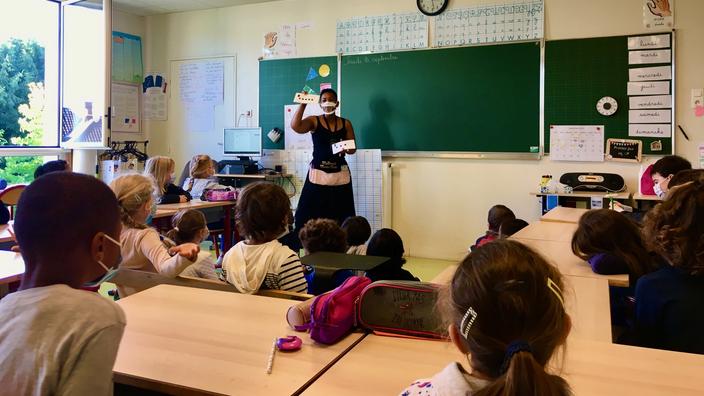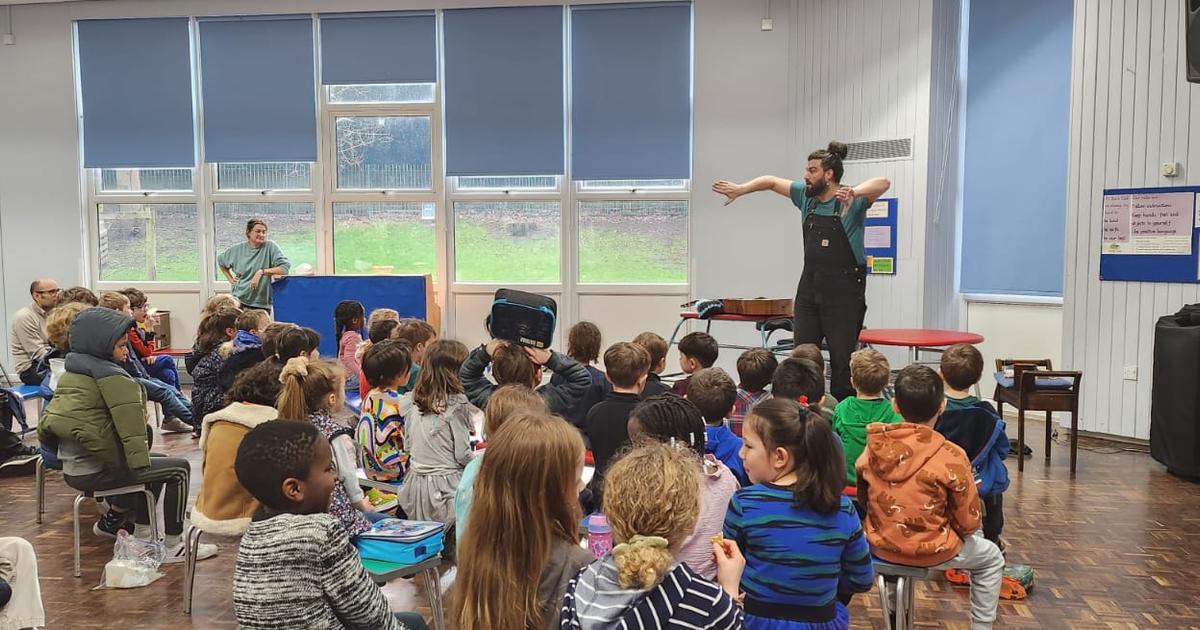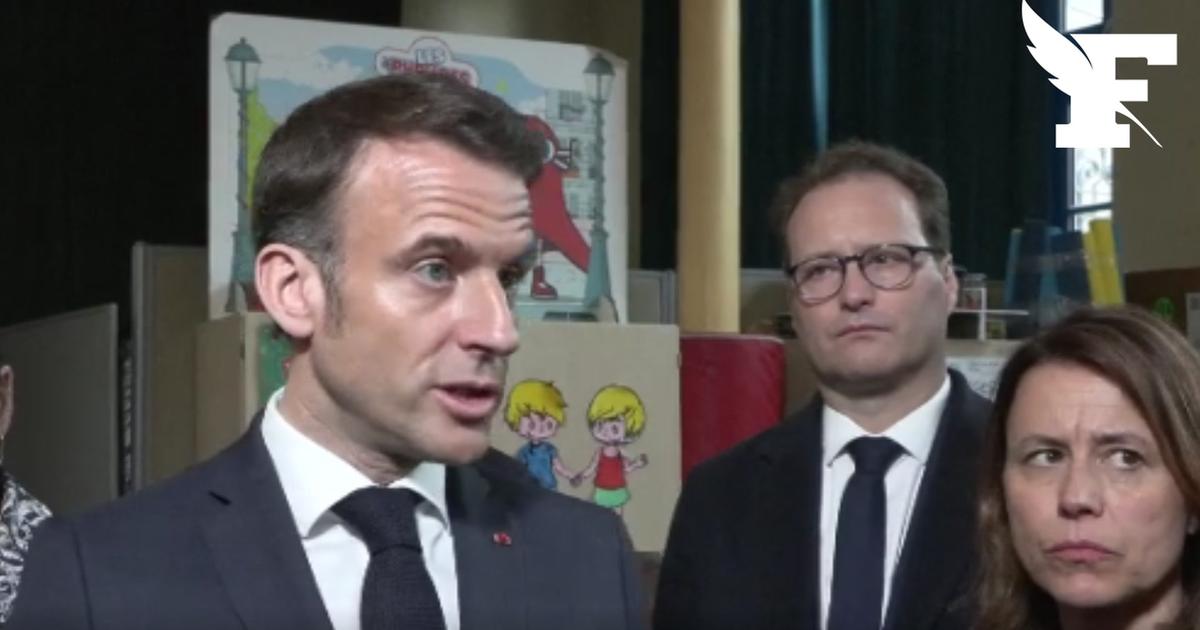With her chubby little finger, Kenza points to the letters that follow on to her picture book.
“
SA-MI,
” she begins, pressing down each consonant.
"
I can almost read,
" she enthuses from the top of her barely over six years.
If some sounds like "
-eur
";
"
-Ans
»Remain indecipherable, the sequence of syllables is rather fluid for the little girl.
Like a million children, Kenza is in grade 1, the wonderful age for learning to read and write.
And as for all primary school students in France, the second week of September rhymes with national assessments.
Organized by the Ministry of Education, these aim to assess the level of our little darlings, in CP, CE2 and 6th, in French and in mathematics.
To discover
Passionate about word games?
Discover the Figaro games app
Digital event of the literary Figaro: "How to get published?"
In the secret of publishing houses ”
It was not yet nine o'clock when the 40 students of the two first-grade classes at the André Pasquier school in Antony (Hauts-de-Seine) saw a white booklet arrive on their little wooden table. Over forty pages, there are exercises in arithmetic, understanding the French language and writing. "
What image in front of your eyes corresponds to the verb 'to bake'
". With a stroke of a pencil, the hands come together to circle the corresponding drawing. “
The child who smiles.
Likewise. Some do not agree and stealthily look at their neighbor. "
Do not cheat, it is useless
", emphasizes Marie-Anne Lamartinière, their teacher. Earlier,she reminded them that "
the main thing was to do your best
."
2021 National Assessment Booklet for MLM CPs / Le Figaro
Despite the stress of facing formal questions for the first time, the children play the game and try to stay focused. About twenty minutes later, the stopwatch stops, the tension drops. The day can resume its course. Even during a geometry exercise, the letters are never far away. You must first write today's date, in cursive writing, on the same line, respecting the size of the letters. While exercise is fun for some, others are dragging their feet. This is the case of Ayden, who is already struggling to stay seated. His line is still awkward, the letters lack regularity, but he hangs on. “
They must learn not to lift the pen and to respect a good line spacing,
” comments Marie-Anne.
Just to his right, Raphaël * applies himself.
Right hand well spread out, index and thumb tightened, the wooden pencil resolutely forms the first letters of "
Thursday September 16
".
A minute of inattention and the middle consonant jumped out to form only "
setembre
".
The little boy sighs, erases nervously with his eraser to start over, this time without error.
Raphaël * applies to write today's date MLM / Le Figaro
Learning to write is inseparable from learning to read.
It is applying graphemes to phonemes, in other words putting letters on sounds.
The child also acquires the graphic gesture, how to hold his pen, the curves necessary to form the letters then the words.
Once the national assessments are completed, this data will not only be collected at the national level, but studied by the teacher who intends to rely on it to help her students progress.
With six years of experience under her belt, she is confident in the progress anyone can achieve in a year.
“
Even if they all come with different levels.
"
Reading and writing: first disparities from the first grade
Kenza arrived in first grade already with a good background of phonetic knowledge. “
She is doing well but does not yet know how to read,
relativizes her mistress.
She doesn't make the connection between what she reads and the meaning of words.
As in most French schools, the learning method remains the syllabic. The child thus learns to glue several syllables and thus form words. “
Then we also learn tool words, like 'therefore', 'in', 'and' which will allow him to quickly read entire sentences.
»With a happy and excited step, André interrupts the reading exercise. “
I don't know how to read at all!
"So he looks at the pictures and"
imagine the story
".
Just like Josephine, who hides behind her rose-colored glasses.
Shy, the little girl "
loves fairy tales
" and longs to "be
able to read on her own
".
A skill largely mastered by Lys, who even knows how to set the tone "
as if it were true
".
Lys trains her cursive writing.
MLM / Le Figaro
“
More and more children arrive in first grade knowing how to decipher, there is a lot of phonology work done in kindergarten,”
explains Marie-Anne.
They are trained more and more to work with and recognize sounds.
But for the less advanced, out of the question for the teacher to leave them by the wayside.
“We go back to the basics:
“
An R and an A, that makes ... RA ”and so on.
Learning is therefore vocalic then syllabic. Then comes the encoding, that is to say the ability to write what I hear and to be able to read it as well as to transcribe it. "
We are really in a process where the child is in a situation of success, he must gain self-confidence, no matter how long it takes.
»The teacher divides her class into groups of levels so that the more advanced do not get bored and catch up with the others.
By making the three years of primary a continuous cycle where repetitions are very rare, it is also the will of the ministry. Following the national assessments last year, “
the two least successful exercises remain that of 'recognizing letters among letters' and that of 'listening to words', it was written.
The difficulties in mastering the vocabulary are therefore confirmed. The most successful are the listening exercises of sentences and texts.
“After a year punctuated by successive confinements, the level had fallen slightly to be caught up over the months. At the end of June, the level “
homogenizes
” even if it is rare for a child with a lot of difficulties to catch up with them in such a short time. "
We never let a child in CM1 who can neither write nor read go,
”reassures Marie-Anne.
At the start of 2020, 88.3% of students at the start of sixth grade had, according to the report from the Ministry of National Education, “
a satisfactory or very good command of knowledge and skills in French
”.
Against 75.2% in 2002. It remains to be seen whether the correction requirement has also undergone the same increase ...
* These first names have been changed









